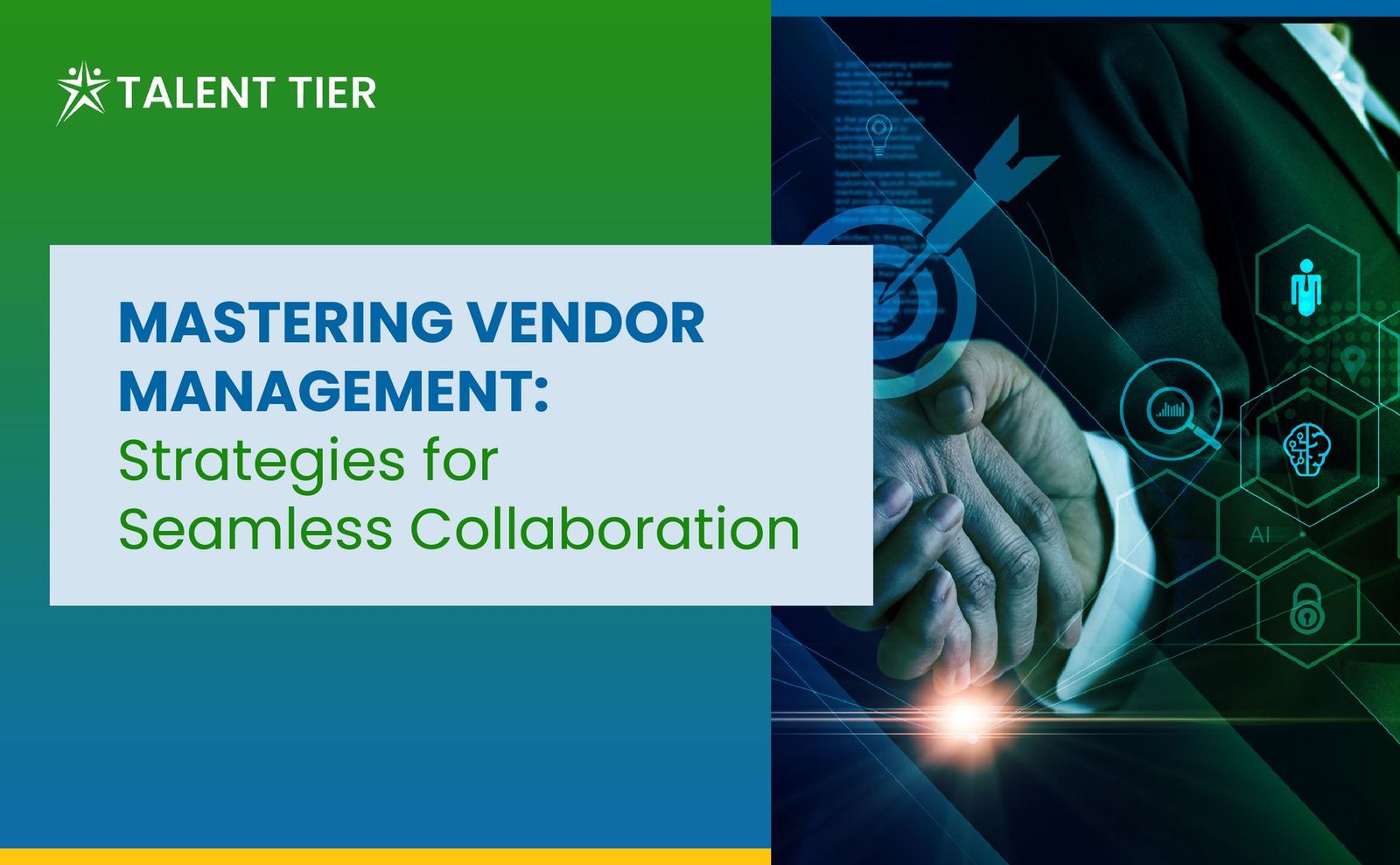Mastering Vendor Management: Strategies for Seamless Collaboration

Introduction
In today's fast-paced business environment, how effectively can your organisation manage its vendor relationships? The success of many businesses hinges not just on internal capabilities but also on how well they can collaborate with external vendors. This intricate dance involves more than just signing contracts; it requires a strategic approach to managing these crucial relationships. This blog post delves into the art of vendor management, exploring how clear communication, performance evaluation, and risk mitigation strategies can foster productive, mutually beneficial partnerships. Readers will gain insights into implementing best practices for enhancing vendor relations, ensuring alignment on project goals, and optimising overall performance.
Clear Communication Channels:
Effective vendor management starts with establishing clear communication channels. This foundation is crucial for ensuring mutual understanding of project requirements and expectations. Best practices suggest defining a structured communication plan at the outset, which includes identifying key points of contact, preferred methods of communication, and expected response times. Technology plays a pivotal role here, with tools like email, project management platforms, or dedicated vendor portals streamlining the flow of information.
Regularly scheduled meetings and status updates are instrumental in maintaining open dialogue, aligning goals, and addressing any issues promptly. It's also vital to articulate performance metrics, key deliverables, and changes in requirements clearly to prevent misunderstandings. Encouraging a two-way communication flow by actively seeking feedback from vendors and addressing concerns promptly further strengthens this relationship. Documenting all communications is another best practice, creating a transparent record of decisions and agreements, thus minimising the risk of miscommunication and fostering successful partnerships.

Performance Metrics and Evaluation:
The heart of effective vendor management lies in implementing robust performance metrics and evaluation processes. Setting clear, measurable key performance indicators (KPIs) aligned with the organisation's objectives is essential. These KPIs enable regular assessments of vendor performance, considering aspects like service quality, timeliness, and adherence to contractual terms. A culture of open feedback promotes discussions on performance and the resolution of issues, establishing a collaborative approach to improvement.
Vendors should be encouraged to propose and implement enhancements based on their expertise. It's also prudent to review and adjust performance metrics periodically to reflect changes in business needs or market conditions. Through consistent evaluation and open communication, organisations can optimise their relationships with vendors, driving continuous improvement and ensuring alignment with strategic goals.

Risk Mitigation Strategies:
In the complex realm of vendor management, implementing effective risk mitigation strategies is paramount. Best practices start with conducting thorough due diligence to assess a vendor's financial stability, reputation, and compliance adherence. Defining clear expectations and requirements in contracts, including SLAs and contingency plans, is critical for managing disruptions.
Diversifying vendor sources can minimise reliance on a single provider, enhancing resilience. Regular monitoring and proactive issue management help in maintaining robust vendor performance. A well-crafted risk management plan, including contingencies for supply chain disruptions, data breaches, or financial instabilities, further bolsters an organisation's preparedness. Strong communication channels ensure that emerging risks are promptly addressed and collaboratively resolved, securing more sustainable vendor relationships.
Conclusion:
Effective vendor management is a strategic endeavour that requires careful planning, open communication, and ongoing evaluation. By establishing clear communication channels, setting and assessing performance metrics, and implementing robust risk mitigation strategies, organisations can cultivate strong, productive relationships with their vendors. This not only minimises risks but also ensures that vendor partnerships are aligned with organisational goals, driving mutual success. As we look ahead, the question remains: how will your organisation adapt and thrive in managing its vendor relationships in an ever-evolving business landscape?


